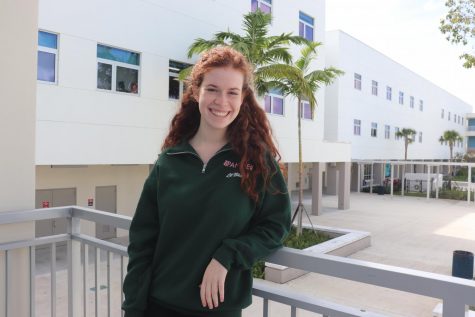K12 Represents a Massive MDCPS Failure
September 4, 2020
On Aug. 31, I woke up over an hour early and made my way to my laptop, suspecting that I would have trouble logging in due to the overwhelming traffic from the nation’s fourth largest school district. I did, in fact, have trouble, but not in the way I thought. Instead of being only a few minutes late to my first period, I missed it altogether, facetiming a friend in hopes of hearing anything my AP Psychology teacher said. I did get into my second period, but I was one of only ten in my class to do so.The day continued that way, getting logged out of almost every class and desperately trying to get back in, the “error” message plaguing my screen. Here’s the long and short of it: the district was not prepared.
The second day wasn’t better. If anything, the playful picture of the dog that informed us there were too many people online and asked us to refresh in 60 seconds was somehow more frustrating than a simple error message. Students scrambled to navigate the platform while fielding messages from their teachers informing them of new meeting platforms. We missed hours of class and were faced with change after change in a time supposed to return daily stability to our lives.
Yes, the district did have a short time to prepare the platform. But never once did we have a day during our supposed “week of welcome” to test it out. How, then, were they to know that the untested servers would fail under the stress of hundreds of thousands of students and teachers joining at once? Then, on Tuesday, the district announced K12 was the victim of a malicious cyber attack.
On Sep. 3, we found out that the cyber attack was partly the result of a Miami-Dade junior. Whoever the student was managed to overload a massively funded and supposedly well- protected program used across the country. This knowledge raises an important question: how vulnerable are these servers, really? If a teenager was able to cause such disruptions, any experienced hacker could theoretically do the same, or worse. It seems as if the necessary protections to keep users and the program secure were simply not put in place.
Let’s also talk about K12 itself. Aside from the fact that students could not even get into the program in the first place, what was supposed to give students and teachers a classroom setting did quite the opposite. Students could only see five other people at a time, the cameras glitched every few seconds leaving people confused, and teacher’s words were interrupted with static and audio breaks. In the first four days of school, I did not manage to complete one full class period on K12 without my teachers giving up and switching us to a platform like Zoom, or simply letting us go for the rest of the class period.
K12 has been plagued with controversy since its inception in 1999. Students and teachers complain about its inefficiency, school districts often drop the program in heated feuds with the platform, and often, it just does not work. K12 even locked students out of their computer after a Georgia online school tried to remove the program from its curriculum. Understandably, the district wanted one common system for its students to use. But this one seems like a strange choice, considering all of the well-known and recurring controversy surrounding it.
The district also assigned a mandatory 20 hour introduction course to the K12 platform. This is a startlingly long waste of time. Superintendent Alberto Carvalho’s plan was that we would return to in-person school by the first week of October, so spending the majority of our first week of school training to use a program that doesn’t even work properly seems like a strange waste of time. Instead of jumping into learning after summer, we have spent the past week trying to get K12 to work to complete the mandatory program.
Now, we are told the district is abandoning K12 altogether while they work out the kinks. While this does relieve some students and teachers like me who know other platforms work better, the district is expected to be paying $15 million for the program. That money could be much better spent on many other necessary things, like raising teachers’ salaries.
The notion that we will come back to the program eventually does not make me feel better. At that point, it might be time to return to brick and mortar schooling, and even if it isn’t, I would much rather use a proven system that we know works. I can only hope that the district utilizes more care and caution in the future while making decisions regarding our education. While no one could have predicted this, someone could have prevented it.







